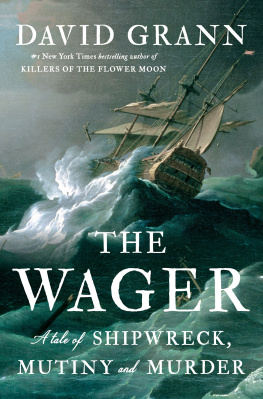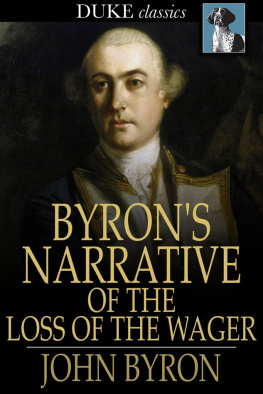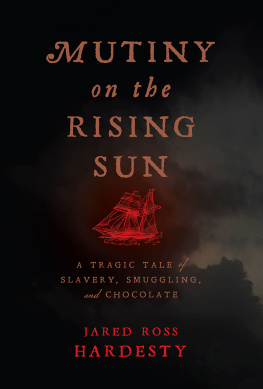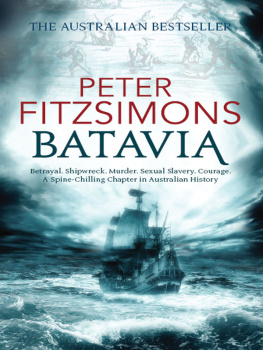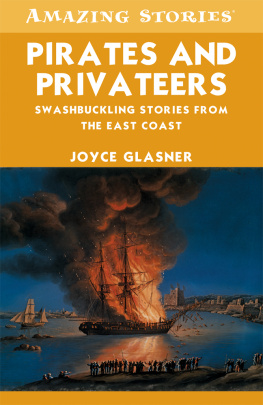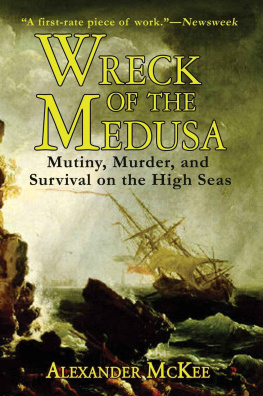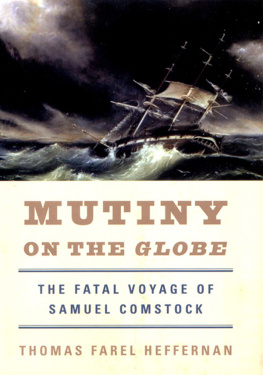Title Page
The Wager Disaster
Mayhem, Mutiny and Murder in the South Seas
Rear Admiral C.H. Layman, CB, DSO, LVO
Publisher Information
Uniform Press Ltd
66 Charlotte Street
London, W1T 4QE
www.uniformpress.co.uk
Digital edition converted and distributed by
Andrews UK Limited
www.andrewsuk.com
Published by Uniform Press Ltd 2015
Text Copyright C.H. Layman 2015
All rights reserved. No part of the contents of this book may be reproduced, stored in or introduced into a retrieval system, or transmitted, in any form or by any means (electronic, mechanical, photocopying, recording or otherwise), without the prior written permission of the copyright holder and the above publisher of this book.
Book design by Felicity Price-Smith
Dedication
For Amanda, with my love
Editors Note
I have modernised punctuation, spelling, place names where I can, and eighteenth-century abbreviations such as tis, em, lookd etc. In a very few places I have corrected mistakes or changed an unimportant word in the interest of continuity. Of the several different spellings of the First Lieutenants name I have settled on Baynes. The long-boat after lengthening was sometimes called a schooner. The term vessel was also used. I have retained long-boat for simplicity and clarity, and standardised the names of the other boats as in Appendix A.
Foreword
by H.R.H. The Duke of Edinburgh

It does not often happen that a sub-plot can be said to have overshadowed the main drama. Yet this remarkable story of the fate of the supply ship for Commodore Ansons expedition into the Pacific in 1741 is far more gripping than the record of his more conventional activities in the war against Spain in that part of the world. In most accounts of the expedition, the only mention of HMS Wager is that she was the supply ship for the small squadron and that she was wrecked in a gale on the coast of southern Chile.
But thereby hangs this tale and what a tale! Told largely in the words of the participants themselves, it reveals a drama of misfortune, unimaginable hardship, super-human endurance, mixed with extremes in human behaviour, both heroic and despicable, and a small boat journey of epic proportions.
Only 36 of the original crew of about 140 made it back to Britain, but one good thing came out of it in the end. Fortunately, Commodore Anson, who later became an Admiral and served on the Board of Admiralty until his death, took the trouble to learn as much as he could about the story, and to apply the lessons of this tragic drama to the improvement and modernisation of the Royal Navy as a whole.

Dramatis Personae
Commission Officers (later called Commissioned Officers)
Captain Daniel (Dandy) KIDD,
commanding HMS Wager until his death in January 1741
Acting Captain David CHEAP,
commanding HMS Wager from January 1741
Lieutenant Robert BAYNES (sometimes spelt Beans or Baines),
First Lieutenant, second in command
Warrant Officers
Thomas CLARK, Master, responsible for navigation
John BULKELEY, Gunner
John KING, Boatswain; responsible for rigging, sails, boats etc.
John CUMMINS, Carpenter
John YOUNG, Cooper
Dr ELLIOT, Surgeon
Thomas HARVEY, Purser; responsible for provisions
Petty Officers (junior to Warrant Officers)
Midshipman the Hon John BYRON
Midshipman Alexander CAMPBELL
Midshipman Isaac MORRIS
Midshipman Henry COZENS
John JONES, Mate, assistant to the Master
Others
Robert ELLIOT, Surgeons Mate; no relation to the Surgeon
Embarked Marine Contingent
Captain Robert PEMBERTON
Lieutenant Thomas HAMILTON
Dr Vincent OAKLEY, Surgeon
Part 1
Setting the Scene
Introduction
Shared Heritage at the End of the World
By Chilean maritime archaeologist Diego Carabias Amor, Director of the Wager Research Project.
The remarkable story of HMS Wager has been recognised many times in the past as one of the most extraordinary episodes in the literature of the sea, being a dramatic and powerful tale of violence, disorder, affliction and endurance. This combination of human qualities made the survivors narratives eighteenth-century best-sellers. Indeed John Byrons account, published for the first time in 1768, and perhaps the best known of them, was some years ago placed on UNESCOs International Collection of Representative Works.
Other aspects of this saga are less well known. For example, survivors accounts provide valuable and privileged first-hand ethnographic information about the maritime-oriented indigenous groups of Western Patagonia during the Spanish Colonial period: the Chonos and the Kawqar. The Chonos, in fact, were assimilated and became extinct during the following decades. Today, the descriptions by the Wager officers of their contacts with the Chonos and the Kawqar are essential reading for any scientist or scholar who wishes to study these ancient inhabitants of Patagonian coastal waters.
Moreover, shipwreck archaeological sites represent an important category of our Underwater Cultural Heritage. Ships, being long-distance vehicles for the transport of people, goods and ideas, go well beyond normal cultural boundaries. Shipwrecks are often relevant both to the country of origin and to the coastal state where they are located, and imply joint responsibilities. Shipwreck sites are unique, vulnerable and valuable cultural resources, and with scientific research they can provide us with substantial information about our past. If they are not properly managed, they may be lost for ever. There is, happily, an increasing international awareness of the urgent need to protect them, and the UNESCO Convention on the Protection of Underwater Cultural Heritage is a fine example of this broad effort.

The shared heritage of Britain and Chile.
It is highly likely that this cannon in the main street of Maullin (a town on the mainland just north of Chilo) was salvaged from the wreck of the Wager .
The loss of the Wager also had important consequences for colonial southern Chile, and contributed significantly to the geographic and cartographic knowledge of Western Patagonia and its indigenous inhabitants. For some years after the ship was wrecked in 1741 there were expeditions to salvage the wreck, and this sparked missionary zeal to convert to Christianity the native peoples discovered there. So the Wager played a decisive part in social construction and surveying of Western Patagonia in a multi-ethnic context, relevant both for the Spanish and the local people of the area.
The process through which significance and meaning is attached to places is dynamic and multi-layered. Although the material remains of the Wager were forgotten for many years, two completely different and independent expeditions coincided 265 years afterwards in the isolated islands where the ship was lost, one a party of British exploration divers and another a group of Chilean maritime archaeologists. Although with different aims and approaches, both were interested in the Wager story. Their collaboration made possible the discovery and study of the archaeological remains of this drama a process that is just beginning.
The historical account now published in this book, based on a thorough research of archives in England and Chile, provides new insights that broaden our perspective. For this story of a ship, lost at the end of the world, was to become a legacy for the whole of humankind.
Next page

